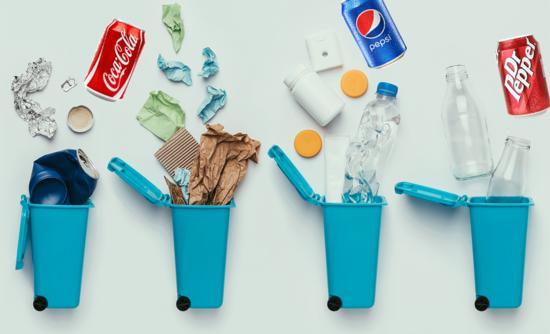I have some bad news for you. You know that plastic bottle you purchased today and threw in the recycling container? Chances are it isn't getting recycled in any meaningful way, and on top of that, it's not going anywhere. Every bit of plastic we use is going to stay on this Earth for a long time.
Unfortunately, our plastic use has become a dependency. When we first found ways to manufacture plastic parts, we never even considered the environmental ramifications. Now that we are starting to see them, it is clear that something needs to be done, and it doesn't look like we're willing to stop using plastics.
Even if we suddenly stopped using single use plastics, there would still be a ton of the stuff at the bottom of our oceans and in landfills. Burning them would only make our global warming issue worse. So what is there to do? The key might be in disgusting little bugs called mealworms.

Mealworms are spectacular creatures, even if they are gross to look at. Mealworms can actually consume plastic and styrofoam, which has toxic chemical additives in its composition. If that wasn't enough of a good use for mealworms, they are also high in protein, which means they are great for livestock feed and maybe one day in the future, human food. Don't worry, you won't have to eat mealworm burgers anytime soon, but it's an option.

A recent study was done to check what happens to plastic chemicals after being ingested by yellow mealworms. The results show that there might be an afterlife for plastic waste. The lead author on the paper, Anja Malawi Brandon, said, ""This is definitely not what we expected to see. It's amazing that mealworms can eat a chemical additive without it building up in their body over time."
The initial fear with mealworms eating plastic is that toxicity would build up in their systems, which would cause them to become toxic themselves. This opens the doors to use them as food as well. Earlier research has shown that mealworms are very easy to grow and use as food from an assortment of animals including chickens, fish, snakes, and shrimp, and that the mealworms can simply live off of plastic.

Mealworms have gut microorganisms that biodegrade plastic, but researchers were still unsure if the additive chemicals in plastic would end up building up over time, which would then make the mealworms toxic. Wei-Min Wu, a senior research engineer, said, "This work provides an answer to many people who asked us whether it is safe to feed animals with mealworms that ate Styrofoam."
Styrofoam/polystyrene is a common plastic that we use a lot for packaging and insulation, but the problem is that it contains a flame retardant chemical. Luckily, this chemical does not build up in the mealworm's stomachs. These chemicals are heavily used in plastics, and even recently the European Union has announced plans to ban its use. The United States is considering following suit.

The research showed that the mealworms who ate polystyrene with the chemical added were just as healthy as those who at polystyrene without it. The mealworms digested the chemicals, excreting it as carbon dioxide and fragments of the chemical. This isn't an excuse to continue using the chemical. "This is a wake-up call. It reminds us that we need to think about what we're adding to our plastics and how we deal with it."